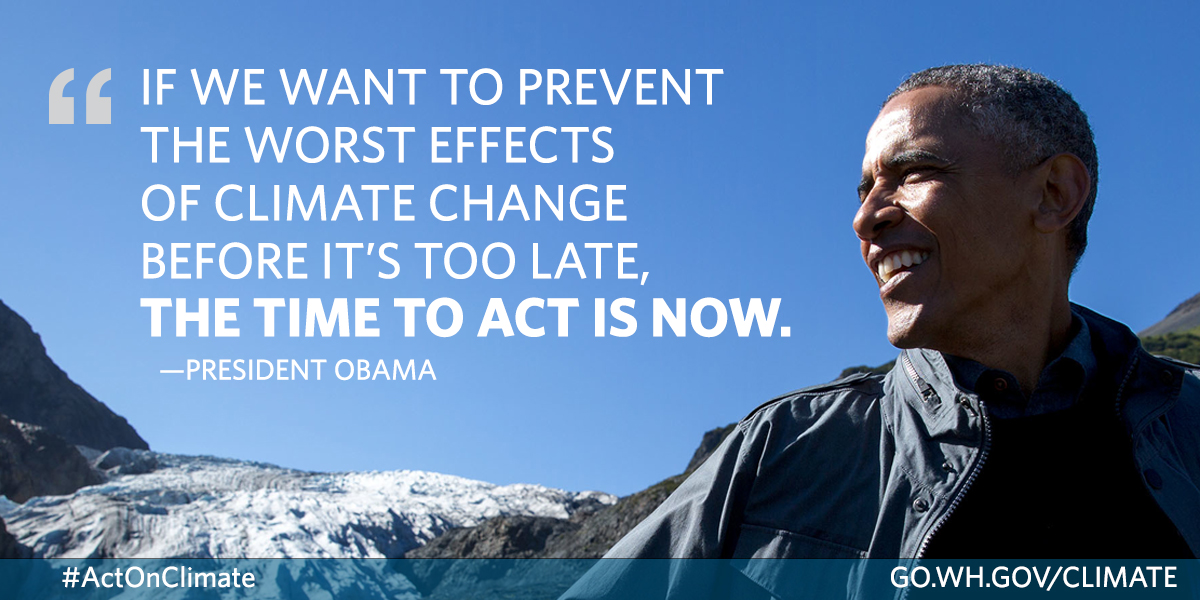

This week, the Obama Administration released a new report on the impacts of climate change on our health. It's called "The Impacts of Climate Change on Human Health in the United States: A Scientific Assessment," and it was developed over three years by approximately one hundred experts in climate-change science on public health. The report significantly advances what we know about climate change's impact on public health – not just in the future, but right now.
In reading it, one fact is clear: Every person is vulnerable to the health impacts associated with climate change. We’ll see worsening allergy and asthma conditions, an increase in the number of premature deaths caused by extreme heat, an increase in water-related illnesses, and more.
While the President’s Clean Power Plan takes strides to address these challenges, there are also a number of steps you can take – for both yourself and your family – in order to be prepared. Here is a summary of some key risks from the reports findings, as well as some helpful resources to help you stay both informed and healthy.
RISK: Air pollution and airborne allergens will likely increase, worsening allergy and asthma conditions. Future ozone-related human health impacts attributable to climate change are projected to lead to hundreds to thousands of premature deaths, hospital admissions, and cases of acute respiratory illnesses each year in the United States by 2030, including increases in asthma episodes and other adverse respiratory effects in children.
WHAT TO KNOW: Addressing local factors that worsen air quality is a key strategy for reducing the impact of air pollution on human health. The U.S. Climate Resilience Toolkit offers a list of tools communities can use to monitor and report their air quality.
RISK: Extreme heat can be expected to cause an increase in the number of premature deaths – from thousands to tens of thousands – each summer, which will outpace projected decreases in deaths from extreme cold.
WHAT TO KNOW: Preparing for longer, hotter, and more frequent heat waves is a key strategy for reducing the health toll of extreme heat. The U.S. Climate Resilience Toolkit offers tools and tips on how to handle extreme heat events.
RISK: Warmer winter and spring temperatures are projected to lead to earlier annual onset of Lyme disease cases in the eastern United States and a generally northward expansion of ticks capable of carrying the bacteria that cause Lyme disease. Between 2001 and 2014, both the distribution and the number of reported cases of Lyme disease increased in the Northeast and Upper Midwest.
WHAT TO KNOW: The U.S. Climate Resilience Toolkit offers an interactive tick tracker and a Lyme disease communications kit, in addition to other information about combating infectious diseases.
RISK: Climate change, including rising temperatures and changes in weather extremes, is expected to increase the exposure of food to certain pathogens and toxins. Rising temperature and increases in flooding, runoff events, and drought will likely lead to increases in the occurrence and transport of pathogens in agricultural environments, which will increase the risk of food contamination and human exposure to pathogens and toxins. This will increase health risks and require greater vigilance in food safety practices and regulation.
WHAT TO KNOW: The U.S. Climate Resilience Toolkit offers a primer on food nutrition and safety, as it relates to climate change.
RISK: Increase the risks of water-related illnesses. Runoff from more frequent and intense extreme precipitation events, and increased water temperatures, will increasingly compromise recreational waters, shellfish harvesting waters, and sources of drinking water, increasing risks of waterborne illness.
WHAT TO KNOW: An important step to understanding how to protect yourself is knowing everything from how to monitor your water usage and understanding best practices of when to use local water resources. You can find more on that here.
RISK: Climate change will have the largest health impact on vulnerable populations including those with low incomes, some communities of color, limited English proficiency and immigrant groups, Indigenous peoples, children, pregnant women, older adults, vulnerable occupational groups, persons with disabilities, and persons with preexisting or chronic medical conditions.
WHAT TO KNOW: This year, CDC’s Climate and Health Program will launch the Climate-Ready Tribes and Territories Initiative, which will provide awards for up to five tribal and territorial health departments in the U.S to support public health preparedness and resilience activities that address the health challenges of climate change in these areas. CDC will use its disease prevention expertise to assist tribal and territorial governments in investigating, preparing for, and adapting to the health effects of climate change.
Already, under President Obama’s leadership, the United States has done more to combat climate change and the protect the health of communities than ever before. His Clean Power Plan will deliver better air quality and help tackle climate related health risks by helping to prevent non-fatal heart attacks, reducing deaths from power plant emissions, and addressing pollutants that can lead to asthma attacks in kids. You can read more about the plan – and its positive impacts – here.

